1. Strategy
1.1. Segmentation
1.2. Target
1.3. Position (value)
2. Tactics
2.1. Product
2.1.1. 4 200-mg bars
2.1.2. 1 200-mg powder
2.1.3. Plastic packaging
2.2. Price
2.3. Place
2.4. Promotion
3. Goals
3.1. Serve the low-income customers in Northeast Brazil
4. Analysis
4.1. Customers
4.1.1. low-income customers liked Uno but can not afford them
4.1.2. usually purchase cheaper local brands
4.1.3. Northeast
4.1.3.1. mixed African-European descent
4.1.3.2. 28% of households own a washing machine
4.1.3.3. 73% use of bleach
4.1.3.4. Used bars of laundry soap to scrub clothes
4.1.3.5. Washing clothes is a social event
4.1.3.6. clean clothes an indicator of social status
4.1.3.7. quality of product
4.1.3.7.1. power of the detergent
4.1.3.7.2. smell
4.1.3.7.3. ability to remove stains
4.1.3.7.4. absence of residue
4.1.3.7.5. Packaging
4.1.3.7.6. Impact on colors
4.1.4. Southeast
4.1.4.1. Mostly European
4.1.4.2. economic & political power house
4.1.4.3. 67% of households own a washing machine
4.1.4.4. 18% used bleach
4.1.4.5. Most used powder detergent in washing machines
4.1.4.6. Washing is done alone
4.2. Competition
4.2.1. Detergent Powder
4.2.1.1. Procter & Gamble
4.2.1.1.1. began operations in Brazil in 1988
4.2.1.1.2. Products
4.2.1.1.3. 15% market share nationally
4.2.1.1.4. 17.5% in NE
4.2.1.1.5. Ace 11% market share
4.2.1.2. Campeiro
4.2.1.2.1. 6% share
4.2.1.2.2. 57% of Omo's price
4.2.2. Laundry soap
4.2.2.1. Market
4.2.2.1.1. $102 million
4.2.2.1.2. 81,250 tons
4.2.2.1.3. Slow growth rate: 6%
4.2.2.1.4. multi-use product
4.2.2.1.5. Produced from animal fat
4.2.2.2. Bem-te-vi
4.2.2.2.1. 11% market share
4.2.2.3. Flora Fabril
4.2.2.3.1. 6%
4.3. Collaborators
4.4. Company
4.4.1. $56B world-wide company
4.4.2. 300,000 employes
4.4.3. 150 countries
4.4.4. 1,600 brands
4.4.5. Started operations in Brazil in 1929
4.4.6. Launched Omo detergent brand in 1957
4.4.7. Powder
4.4.7.1. Omo
4.4.7.1.1. $3 per kg
4.4.7.1.2. 52% share
4.4.7.2. Minerva
4.4.7.2.1. 17% share in NE
4.4.7.2.2. price 82% of Omo
4.4.7.3. Compeiro
4.4.8. laundry soap
4.4.8.1. Minerva
4.4.8.1.1. 19% of market share
4.5. Context
4.5.1. Brazil: 8.5 million km2
4.5.2. Cycles of deep recession and strong recovery
4.5.3. Poor buying power increased 27% per year 1995-96
4.5.4. 1996: Per capita income $4,420
4.5.5. Northeast lagged behind Southeast

